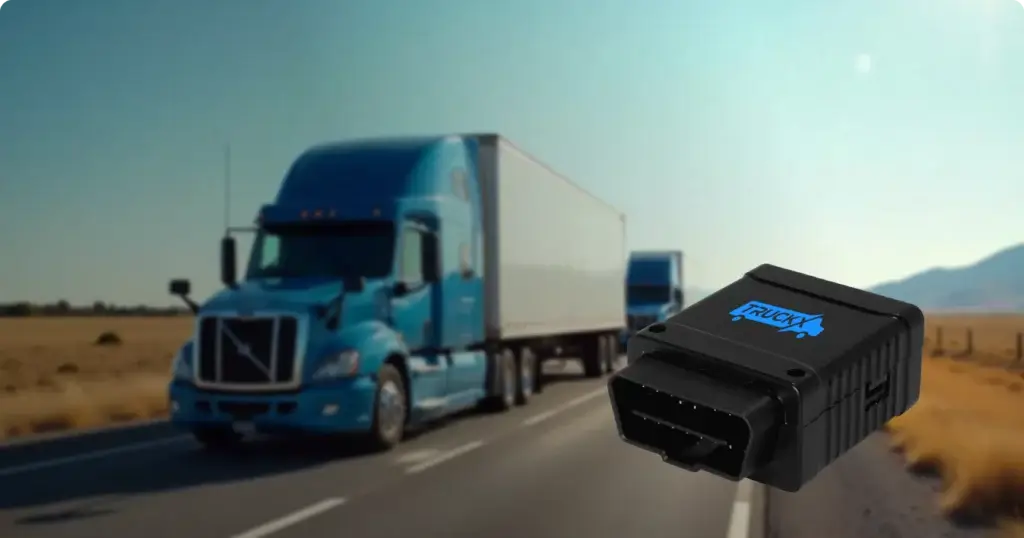Electronic logging devices or ELDs were initially brought in to minimize the number of road accidents and improve driver’s safety. It’s true that before April 2018, drivers, as well as the administrators, were somewhat reluctant to adopt entirely new technology. This was the key reason behind the ELD mandate.
The ELD mandate rules that all carriers must have FMCSA certified ELDs for trucks installed in their vehicles to comply with the latest regulations. Any violation will directly affect their CSA (Compliance, Safety, and Accountability) score.
Now, what are the types of violations that the drivers can avoid?
How will they stay compliant while on the road?
Let’s talk about all that and more in this post.

The common ELD violations all truckers should be aware of
• Not using an FMCSA-compliant ELD device
The most common type of ELD violation is not using FMCSA certified ELDs in the vehicles. Fleet owners or truckers may install cheap ELDs to avoid the upfront costs of upgraded devices and find out later that those are not even in compliance with the FMCSA regulations. That results in a violation under Section 395.22A with a severity weight of 5, which is followed by hefty fines and a reduction in the CSA scores. You can avoid such an adverse situation by checking the list of FMCSA’s registered devices before you set off to buy one. That way you will steer clear of trouble.
• Inability to transfer data when asked
If any trucker fails to transfer data from the ELD device when prompted to do so by an authorized enforcement official, then he or she will be charged with ‘no record of duty’ status under Section 395.8A with the severity weight of 5. This is yet another reason to ensure that you have a fully functional ELD, which can transfer data electronically via Bluetooth or other measures, installed in your vehicles. Remember, it is easy enough to find affordable ELDs for owners and operators, but make sure you buy the equally efficient ones.
• Failure to report a malfunction in the device
Drivers should be aware of any malfunctions in the device so that they can produce supporting documents and switch to a paper log to avoid violation under Section 395.34A1. They should be thoroughly aware of the device diagnostics and probable malfunctions. The ELD manufacturer can shed light on that. Further, the drivers should also submit a written notice to the fleet owner regarding malfunctions, if any, and produce a copy of the document to the enforcement officials to avoid getting penalized. Lastly, the carriers should fix any malfunction within 8 days. In unable to do so, they should get a specific extension from the FMCSA Division Administrator.
• Failure to log in/out
According to the ELD mandate, all truckers must log in to their ELDs before starting their respective journeys and log out after completing their day’s work. Truckers that fail to do so will be charged with ‘no record of duty’ status under Section 395.8A with a severity weight of 5. Hence, fleet owners must provide rigorous training to truckers before they get on to drive the ELD-installed vehicles, so that they grow a habit of logging in/out and do not forget it at any cost.
• The device’s display screen is not visible
If the display screen of the ELD is not visible outside the truck, then the driver can be charged under Section 395.20B for incomplete/wrong log. If you are a driver, you can avoid this situation by ensuring that the device screen is visible from outside the vehicle while mounting it. A little tilting and undocking are acceptable, especially if you are using a portable device like a Smartphone. Mobile devices need not be handed over to the authorized officials to help them check the screen. The drivers can do that on their behalf, without running the risk of breaking the law.
Some other ELD violations that all drivers should make a mental note of are, a:
- Failure to maintain ELD instruction sheets for reporting a malfunction
- Failure to provide authentic possession documents in favor of the driver
- Failure to keep the ELD user’s manual within the vehicle
- Failure to add the trailer number, location description, shipping docket number, etc. manually
- Failure to certify the authenticity of the information provided by the ELD
Although it may seem a lot of work, getting acquainted with any new system requires a certain level of understanding, knowledge, and training. ELD solution providers are also trying to do their bit by ensuring that the changes from the current way of doing things are incremental and easy to understand. And this is all necessary given that 16th Dec. 2019 is just around the corner.
• Failure to manage unassigned driving time
A trucker that fails to assume/decline unassigned driving time on their ELDs can be charged with a violation under Section 395.32B for an incomplete/wrong log. Therefore, all drivers must be thoroughly trained to manage unassigned logs on their ELDs.









